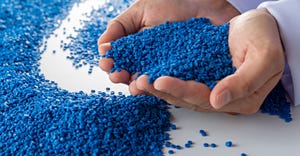The Troubleshooter: Setting Up Your Injection Molding Process for Success
Paying close attention to key setpoints in barrel and mold temperature, pressure, time, and cooling will help eliminate defects and scrap.
May 2, 2024

At a Glance
- Base barrel temperature setup on the material manufacturer’s recommended temperature window.
- Lower mold temperatures help to run faster cycles, but they can also cause defects and complications.
- Cooling too fast can result in higher shrink rates, dimensional problems, and heat sinks.
Setting up plastic injection molding processes can seem like a daunting task. After all, there are many different defects that can lead to scrap when a process has been set up incorrectly. The key to developing a robust process is understanding the fundamentals of plastic injection processing. This article will outline the primary foundations of a process, as well as detail the defects that may be caused by incorrect settings.
Barrel temperature.
Barrel temperatures are key setpoints that can lead to scrap events. Barrel temperatures that are set too low can lead to shorts. Higher viscosities can be harder to control due to an increase in flow front thickness.
Lower temperatures can also lead to over packing and sticking parts.
Higher temperatures result in lower viscosities and thinner flow fronts. Faster flow fronts can lead to trapped gas at end of fill or poorly packed ribs and features. They can also lead to flash.
Best practice when establishing barrel temperatures is to base setup on the material manufacturer’s recommended temperature window. The manufacturer will provide a material data sheet that gives you the recommended temperature for the material’s performance range. Start at lower temperatures to benefit from an improved cycle, but if scrap is being generated because the temperature is set too low, increase barrel temperature until the material performs optimally.
Mold temperature.
Mold temperatures can also create defects in a process. Lower mold temperatures help to run faster cycles, but they can also cause shorts, poor part finish, overpacking, and poor knitting in areas where multiple flow fronts meet. Higher mold temperatures can cause flow fronts to move too quickly, leading to gas trap and poorly filled ribs and details. Higher temperatures also can lead to increased part shrinkage, forcing a processor to run longer cycles. When stationary and moveable half temperatures are different from each other, they can cause or correct warp defects.
Pressure.
Pressure is also one of the primary factors in a plastic injection process. Hold pressure is a key setpoint, and peak pressure is a key process monitoring variable. If the pressure is too high, it can lead to flash, overpacking, and voids. Pressure that is too low can cause shorts, sinks, and other under pack conditions.
Time.
Measurements and setpoints related to time are also key to establishing a robust process. Primary setpoints related to time are hold time, fill time, cool time, and cycle time. Key monitoring variables such as recovery time, actual fill time, and cycle times are important when establishing a process. Cool time must be longer than screw rotate time to prevent screw recovery from causing inconsistent cycle times.
Cooling.
Excessive cooling duration can lead to longer cycles, sticking parts, and dimensions that are too large or long. Cooling too fast can result in higher shrink rates, dimensional problems, and heat sinks. Long cooling events can also lead to splay because of lower mold and barrel heat soak conditions.
Heat, time, pressure, and cooling are the key foundation blocks of a robust plastics process. Understanding the effects they have on a process is key to process setup. These are the first four factors to consider when scrap events occur. Knowing this will help you to better understand what adjustments need to be made to eliminate scrap and increase profits.
Got a problem with this, that, or the other thing? You might find answers in some previous "Troubleshooter" columns:
A Primer on Plastics Processing Fundamentals
How to Interpret Plastic Injection Molding Data
How to Identify and Correct Shear-Related Splay Defects
The Role of Moisture in Injection Molding Splay Defects
Preventing Flash in Injection Molded Parts
How to Prevent Common Failure Modes in Injection Molding
Building a Validated Plastic Injection Molding Process
Fixing Color Defects in Injection Molded Parts
Key Steps for a Stable Injection Molding Process
Fundamentals of an Injection Molding Plant or Cell Startup
What to Consider When Buying an Injection Molding Machine
How to Prevent Mold-Change Failures
Fundamentals of Injection Molding Press Startups
Preventing Speed- and Time-Related Defects in Injection Molded Parts
About the Author(s)
You May Also Like


